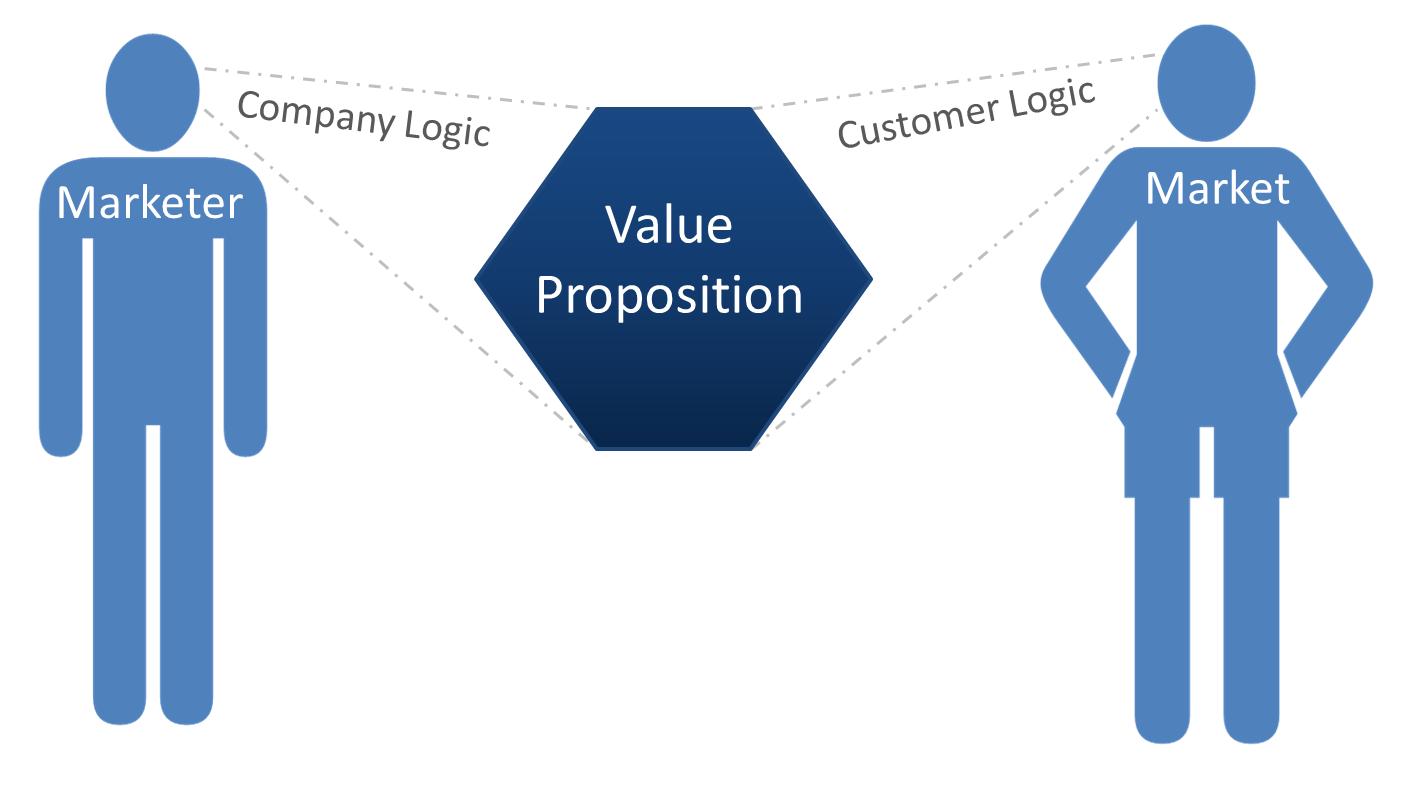Creating Customer Value 
You make buying decisions everyday. Should you buy the Cadbury Dairy Milk or the Cadbury Dairy Milk Fruit and Nut? Should you pay 100 rupees for that new game or try to find a free game app that’s basically the same thing?
For every decision, a consumer wonders, “is this worth the value?” The gain the consumer receives for the benefit is weighed against the cost the consumer must pay to acquire the benefit. The value the individual consumer places on a product or service becomes the customer value for that offering.
For every decision, a consumer wonders, “is this worth the value?” The gain the consumer receives for the benefit is weighed against the cost the consumer must pay to acquire the benefit. The value the individual consumer places on a product or service becomes the customer value for that offering.
An understanding of what value added to the process for the product or service and for the business as a whole. Value added to Cadbury has value added to its products in many different ways, for example the different sized chocolate bars that can be purchased by the customers, there's lunch sized dairy milk bars for children to eat with their packed lunch at school, and there's also different flavoured chocolate (fruit and nut/crackle/). This all adds value to Cadbury's product because it ensures that Cadbury stays competitive amongst its rivals. By producing unique chocolate products and producing new chocolate products for customers, it helps Cadbury to have an edge over its competitors.
Every consumer has a unique set of needs and wants, so each consumer will place a different consumer value on different products/services. Would you rather buy one Dairy Milk Crackle or two Dairy Milk plains chocolates? The consumer has to decide whether he wants to pay a high price for a quality product or whether the product is not worth that price. The value the individual consumer places on a product or service becomes the customer value for that offering.
BENEFITS - COST = CUSTOMER VALUE
Chocolate consumption in India is extremely low. Chocolates in India are deemed as indulgence. A strong growth in volume was witnessed in the early 90‟s when Cadbury re-positioned chocolates to include adult consumption. Leading players like Cadbury have been attempting to do this by value for money offerings, which are affordable to the masses. Cadbury Dairy Milk encapsulates an enormous breadth of emotions. Cadbury Dairy Milk entered the Indian market in 1948, and since then for consumers across India, the word Cadbury has become synonymous with chocolate.
Cadbury Dairy Milk has been the market leader in the chocolate category for years. It has participated in every Indian's moments of happiness, joy and celebration. Today,Cadbury Dairy Milk alone holds 30% of the value share of the Indian chocolate market. In the early 90's, chocolates were seen as 'meant for kids', usually as a reward or a bribe for children. With their brand re-positioning strategy, Cadbury Dairy Milk became the perfect expression of 'spontaneity'. In the late 90's, to further expand the category, the focus shifted towards widening chocolate consumption amongst the masses, through the 'Khaane Walon Ko Khane Ka Bahana Chahiye' campaign. This campaign built up the social acceptance for chocolate consumption amongst adults, by largely showcasing people of every age group indulging in chocolate. More recently, the 'Kuch Meetha Ho Jaaye' campaign associated Cadbury Dairy Milk with celebratory occasions and festivals.
Mothers attach a lot of emotional importance to nourishment while bringing up their children. However, children are always looking out for the tastiest option to make their daily dose of milk more enjoyable. Cadbury now offers two options to capture this appeal: Cadbury Bournvita, with its popular chocolate taste, and its latest offering, Cadbury Bournvita 5 Star Magic, as an additional offering. Their advertising has evolved with the times to reflect the changing needs of the consumers.During the '70s the communication centered on 'good upbringing' and Bournvita became an essential building block for childhood. "Goodness that grows with you" was the campaign idea that communicated this thought.In the 80's the focus shifted from 'Upbringing' to 'Intelligence' with the more aggressive, “Brought up right, Bournvita bright" campaign, which was very successful during its time.In the early '90s, All the brands in the category were solely focused on physical benefits like nourishment,energy and growth. It was at this time that Bournvita decided to raise the bar by promising physical as well as mental benefits. This resulted in the famous “Tan Ki Shakti, Man Ki Shakti” campaign which became an anthem for the brand.

They also had an interactive campaign which allowed students to check their exam results using their mobile service and encouraged those who passed their examinations to celebrate with a Cadbury Dairy Milk. It was the 'Pappu Pass Ho Gaya' campaign which won a plethora of awards at various festivals.

Cadbury Bytes was launched as Cadbury's foray into the rapidly growing packaged snack market. But it is sweet and not salty, as compared to most of the other snacks. Cadbury Bytes was targeted at teenagers as they are the largest consuming segment of packaged snack category. Cadbury Bytes is positioned as the 'only sweet snack' in the world of salty snacks. Their campaigns and commercials talk about breaking the stereotype. With a rebellious streak to attract the youth.
Delivering value to customers is important to companies. To be willing to pay, a customer must derive value from a market offer. There are various interpretations of what is meant by customer value. Woodruff’s definition of customer value is widely cited and encompasses most interpretations of customer value. Woodruff defines customer value as: “a customer perceived preference for and evaluation of those products attributes, attribute performances, and consequences arising from use that facilitate (or block) achieving the customer’s goals and purposes in use situations”.
The definition above suggests that there are two aspects to customer value: desired value and perceived value. Desired value refers to what customers desire in a product or service. Perceived value is the benefit that a customer believes he or she received from a product after it was purchased. Customer value can be examined at different levels. At a low level, customer value can be viewed as the attributes of a product that a customer perceives to receive value from. At a higher level, customer value can be viewed as the emotional payoff and achievement of a goal or desire. When customers derive value from a product, they derive value from the attributes of the product as well as from the attribute performance and the consequence of achieving desired goals from the use of the product.

Mothers attach a lot of emotional importance to nourishment while bringing up their children. However, children are always looking out for the tastiest option to make their daily dose of milk more enjoyable. Cadbury now offers two options to capture this appeal: Cadbury Bournvita, with its popular chocolate taste, and its latest offering, Cadbury Bournvita 5 Star Magic, as an additional offering. Their advertising has evolved with the times to reflect the changing needs of the consumers.During the '70s the communication centered on 'good upbringing' and Bournvita became an essential building block for childhood. "Goodness that grows with you" was the campaign idea that communicated this thought.In the 80's the focus shifted from 'Upbringing' to 'Intelligence' with the more aggressive, “Brought up right, Bournvita bright" campaign, which was very successful during its time.In the early '90s, All the brands in the category were solely focused on physical benefits like nourishment,energy and growth. It was at this time that Bournvita decided to raise the bar by promising physical as well as mental benefits. This resulted in the famous “Tan Ki Shakti, Man Ki Shakti” campaign which became an anthem for the brand.
They also had an interactive campaign which allowed students to check their exam results using their mobile service and encouraged those who passed their examinations to celebrate with a Cadbury Dairy Milk. It was the 'Pappu Pass Ho Gaya' campaign which won a plethora of awards at various festivals.
Cadbury Bytes was launched as Cadbury's foray into the rapidly growing packaged snack market. But it is sweet and not salty, as compared to most of the other snacks. Cadbury Bytes was targeted at teenagers as they are the largest consuming segment of packaged snack category. Cadbury Bytes is positioned as the 'only sweet snack' in the world of salty snacks. Their campaigns and commercials talk about breaking the stereotype. With a rebellious streak to attract the youth.
Delivering value to customers is important to companies. To be willing to pay, a customer must derive value from a market offer. There are various interpretations of what is meant by customer value. Woodruff’s definition of customer value is widely cited and encompasses most interpretations of customer value. Woodruff defines customer value as: “a customer perceived preference for and evaluation of those products attributes, attribute performances, and consequences arising from use that facilitate (or block) achieving the customer’s goals and purposes in use situations”.
The definition above suggests that there are two aspects to customer value: desired value and perceived value. Desired value refers to what customers desire in a product or service. Perceived value is the benefit that a customer believes he or she received from a product after it was purchased. Customer value can be examined at different levels. At a low level, customer value can be viewed as the attributes of a product that a customer perceives to receive value from. At a higher level, customer value can be viewed as the emotional payoff and achievement of a goal or desire. When customers derive value from a product, they derive value from the attributes of the product as well as from the attribute performance and the consequence of achieving desired goals from the use of the product.
No comments:
Post a Comment